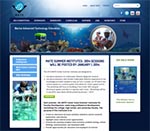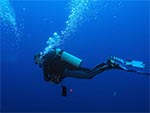Selecting the Best Images for Your Website
We’ve all heard the phrase time and time again: a picture is worth
a thousand words. When it comes to website design, this can be
especially true as photos readily capture the interest of users
and can convey a great deal of information in a limited space.
However, not all images are created equal. When looking for or
taking photos to post on your website, keep these pieces of advice
in mind:
-
Quality: Quality is crucial! A high-resolution image
suggests a professional organization and website, while a low
resolution, pixelated image may suggest the opposite. Also, if
you plan on increasing the size of an image, make sure that the
photo will still retain its original quality.
-
Purpose: The photos on your website should do more than
merely add decoration, they should add information. Images have
the potential to increase your website's success; therefore,
choose an image that will help the viewer learn or understand a
concept or attribute you are trying to convey.
-
Powerful: Think National Geographic. The images that
NatGeo selects are so intriguing and powerful that they often
convince web users to open an article to learn more. While
images can strengthen the content on your site, you'll want to
make sure the written content is just as powerful. You don't
want the photo to overwhelm the text.
-
People: Pictures of people, especially students, are
great, as they capture attention and bring a real life touch to
your website. However, be careful about using stock photos; if
the viewer can tell that a photo is not authentic, your website
will lose credibility.
Finally, make sure that you have the legal right to use any photos
or graphics that are displayed on your website. Tools like
Creative Commons Search
and WikiMedia Commons
can be invaluable for finding high quality royalty-free images.




